Art World
How Shanghai’s Art Scene is Transforming, from Hangzhou to West Bund
An on-the-ground report from the city's art week, which boasted two fairs, big museum shows, and new gallery pop-ups.
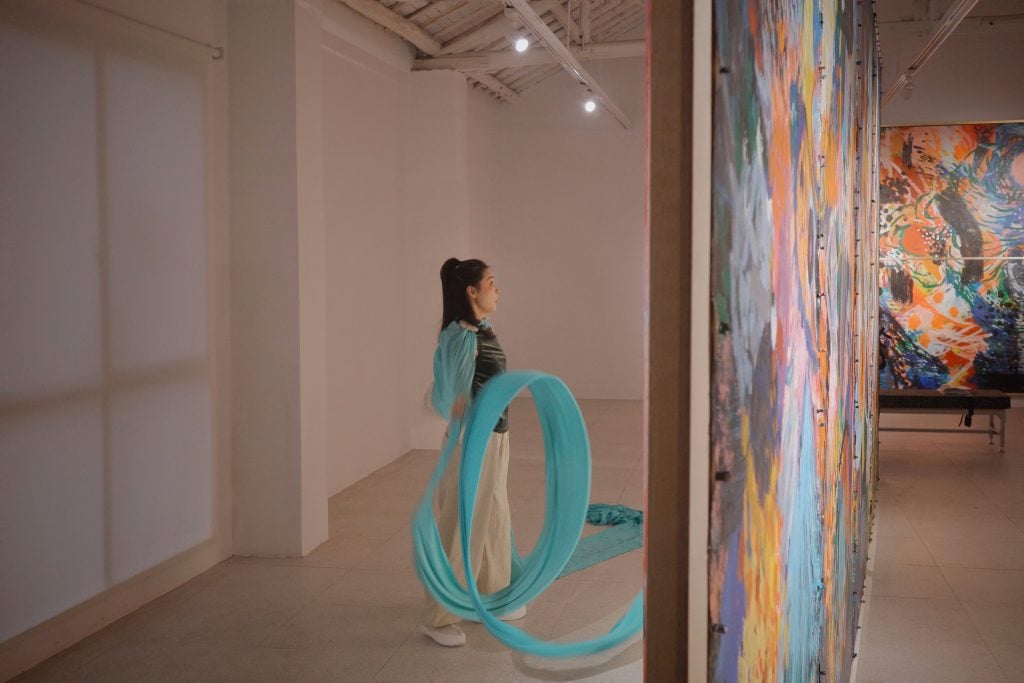
An on-the-ground report from the city's art week, which boasted two fairs, big museum shows, and new gallery pop-ups.

Cathy Fan

“Very quiet.” That’s how several people I spoke to before Shanghai Art Week last week described the atmosphere. Still, it remains China’s biggest annual art event, especially for the mainland. The week is grounded by two homegrown art fairs: ART021 Shanghai Contemporary Art Fair and West Bund Art and Design, both of which touted some sales even if at lower prices and at a slower pace than in past editions. Yet, beyond the fairs, the city’s art scene is changing shape. Here are five of the biggest trends I noticed this year.
HANGZHOU PRELUDE
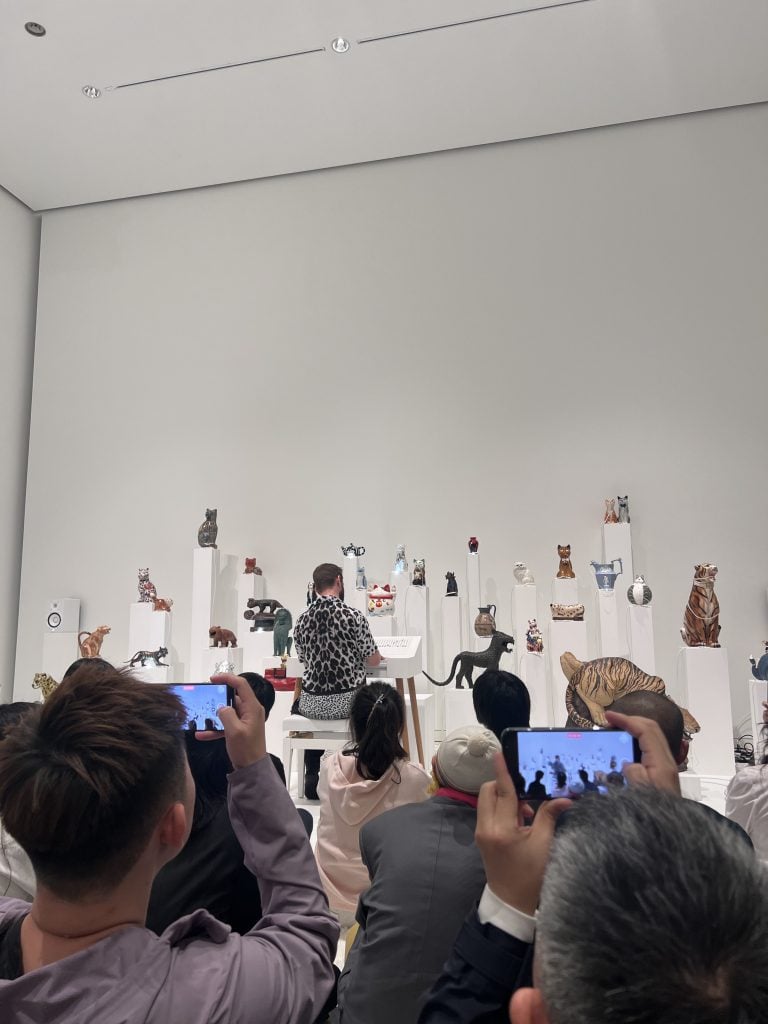
Artist Oliver Beer performed the Cat Orchestra at the group exhibition “Prosodic Grains” at By Art Matters. Photo: Cathy Fan
The Shanghai art market, radiating outward to China’s affluent Yangtze River Delta area, is finally beginning to take shape.
The nearby city of Hangzhou has a poetic history and cityscape: It was once the capital of the Southern Song Dynasty and is now the home of e-commerce giant Alibaba and renowned for its thriving commerce and private entrepreneurship. In recent years, the city has become a magnet for artist-run alternative spaces.
This year, Hangzhou successfully attracted a critical mass of the art crowd heading to Shanghai, thanks to the citywide “Make a Swing Art Week” initiative, spearheaded by By Art Matters, a museum founded by fashion mogul and major collector Li Lin.
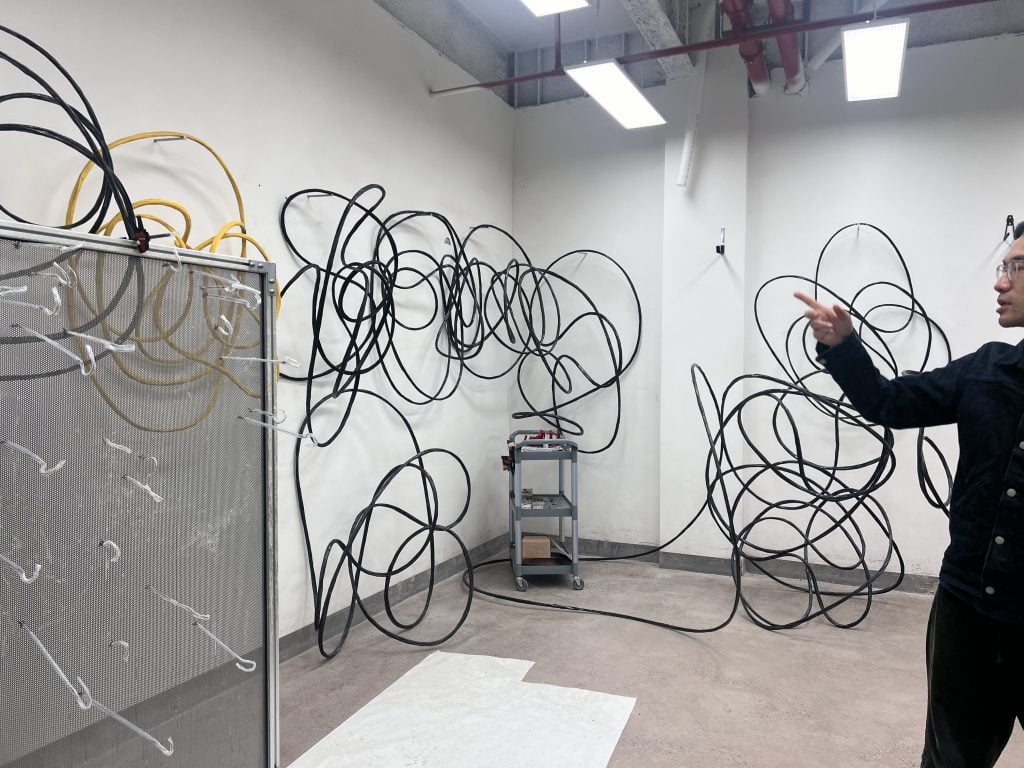
Artist Feng Chen in his studio with his carbon fiber drawing installation. Photo: Cathy Fan
Over several decades, the city’s China Academy of Art (CAA) has nurtured talents who have greatly contributed to China’s art market. Artist Feng Chen, whose studio I visited, is a quintessential example. He frequently commutes between the two cities on a one-hour high-speed train and is represented by gallery Capsule Shanghai.
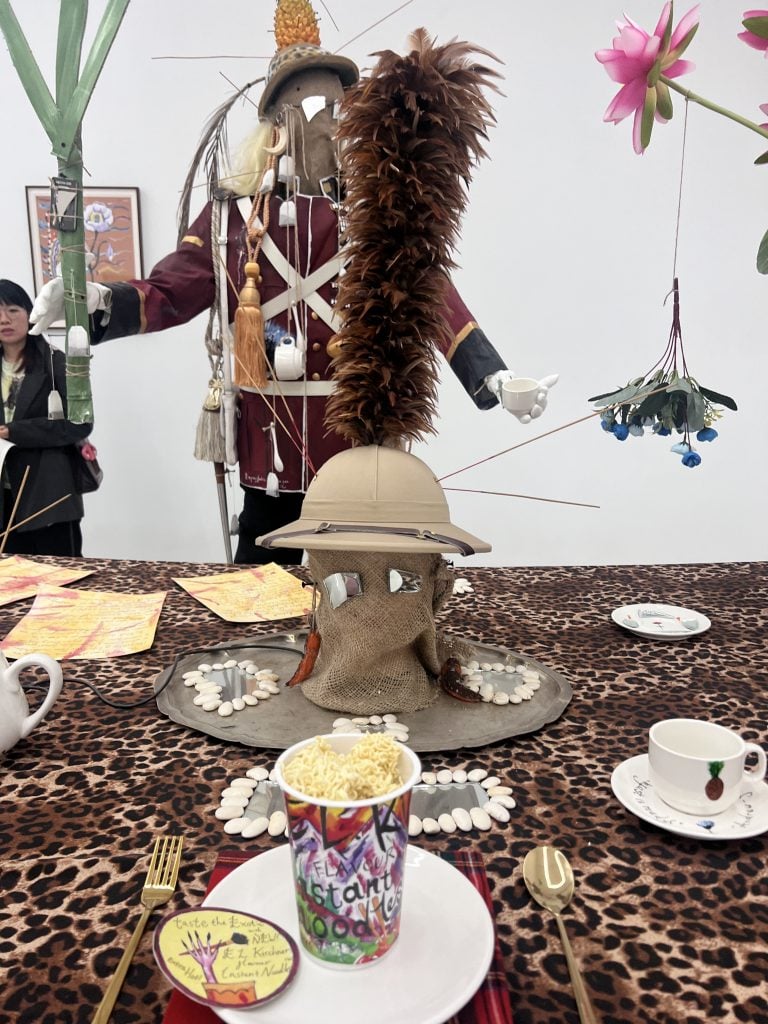
Artist Andrew Gilbert’s installation at The Delta INST Lounge space. Photo: Cathy Fan
In a limited amount of time, I visited The Delta INST, a dual space tucked away among residences and neighborhoods. It was established by five young artists who graduated from CAA. Currently on display is the post-colonial work of Scottish artist Andrew Gilbert, who previously held a residency at By Art Matters.
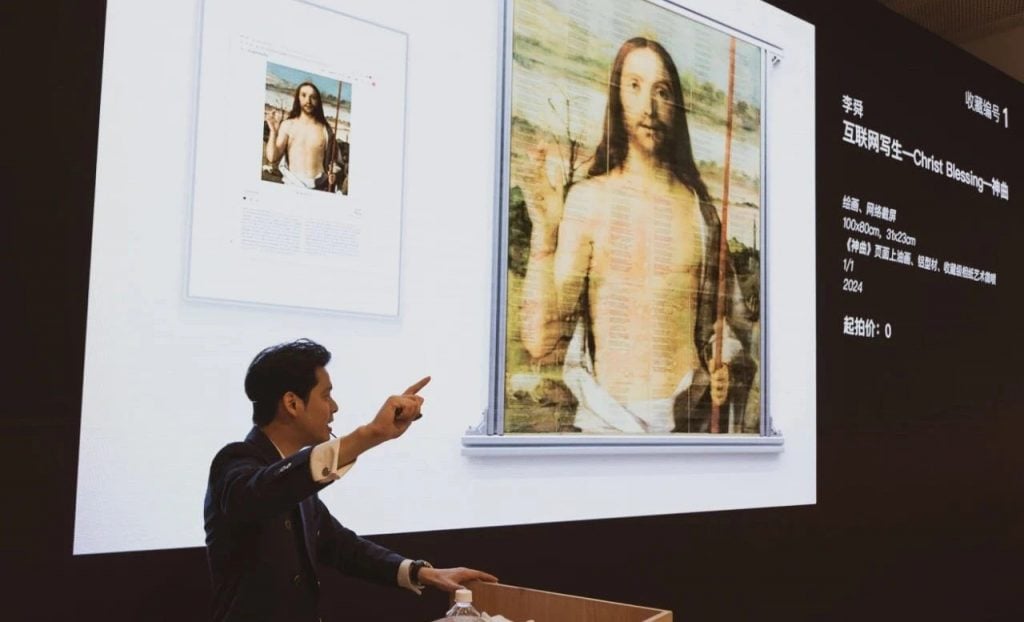
This year’s Flower & Bird Art Festival charity auction, which traditionally starts with artist Li Shun’s work.
Other highlights of Hangzhou included Paral, an enchanting reverse speakeasy that transported me back to New York. Upon request, a mysterious door slowly lifted to reveal a solo exhibition of outsider artist Nuan Nuan, who has created a fairyland-like space. Alice Chen, an artist and wife of the former French Consul General in Shanghai, returned from France to create PARC in her hometown of Hangzhou by the famous West Lake.
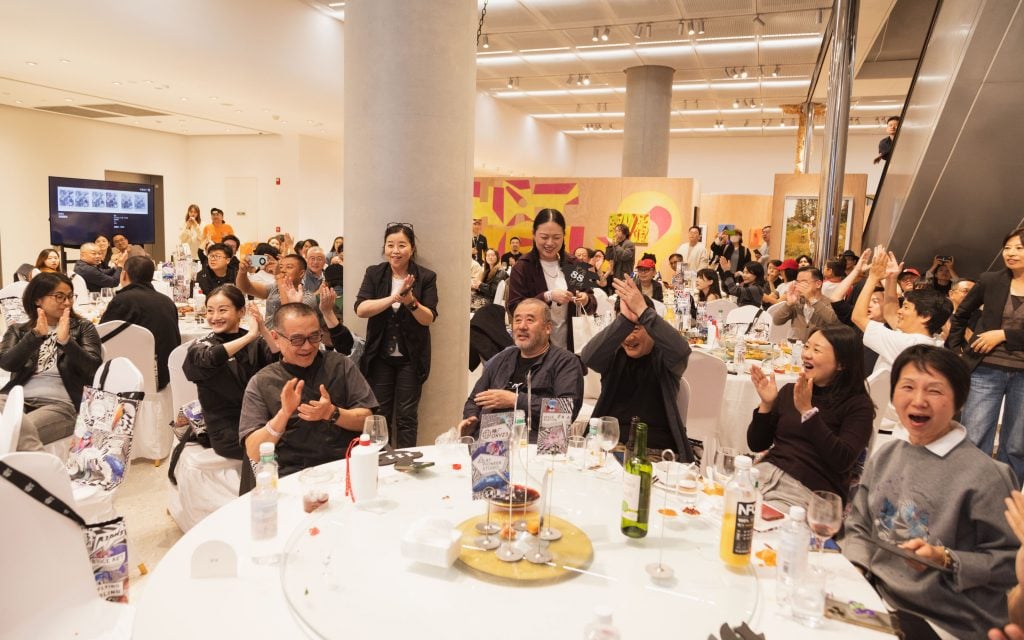
Bidding at the artist-prepared dinner, accompanied by this year’s Flower & Bird Art Festival charity auction.
For the first time, I witnessed the famous (and fun!) Flower and Bird Art Festival charity auction, which has been organized by local artists in Hangzhou for nine years. The original idea was to sell “scrap artwork” from local artists; co-organizer and artist Cheng Ran’s humorous sales pitches add a unique touch to the evening.
While on the whole Hangzhou’s art scene is more artist-centered, commercial galleries are not absent in Hangzhou and many maintain close ties with New York. Inna Art Space held a stunning opening performance for artist Chen Dongfan, featuring traditional Peking opera. Inna also has an apartment-style exhibition space on New York’s Lower East Side.
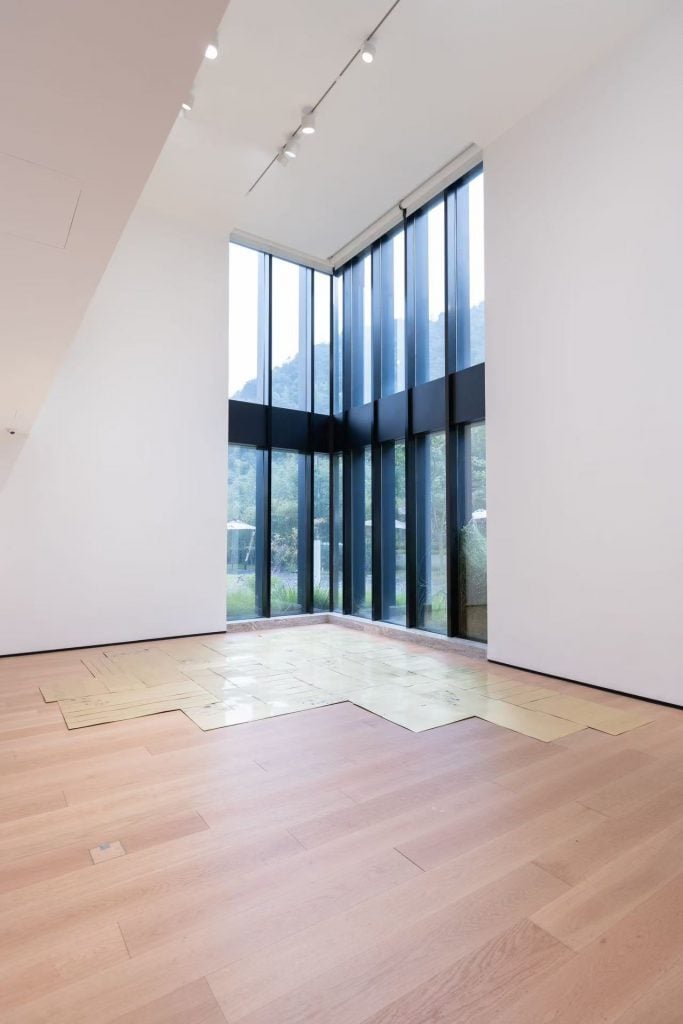
Marie Angeletti’s Gold Floor showing at the group exhibition “Shake, Rattle, Roll & Shine” at Zian Gallery, 2024.
Zian Gallery, founded in 2022 in the serene suburban mountains, attracts prominent visitors. Gallery founders Zian Cao and Ziyi Liu returned from studying in New York and have worked with numerous international artists and curators while also seeking to develop local talent. The two galleries participated in this year’s West Bund and ART021 fairs, respectively.
YANGFANG: A NEW TESTING GROUND?
Outside of the dual art fairs this year, the biggest curiosity lay in Paula Cooper Gallery’s Shanghai pop-up space. The show, “Resonance,” is the New York blue-chip gallery’s first exhibition in Asia and is installed in a historic mansion, known as a “yangfang.” In English, this translates to “Western-style building” and often refers to architecture from Shanghai before the 1930s. The structures seem to be providing a valuable incubator for new spaces lately.
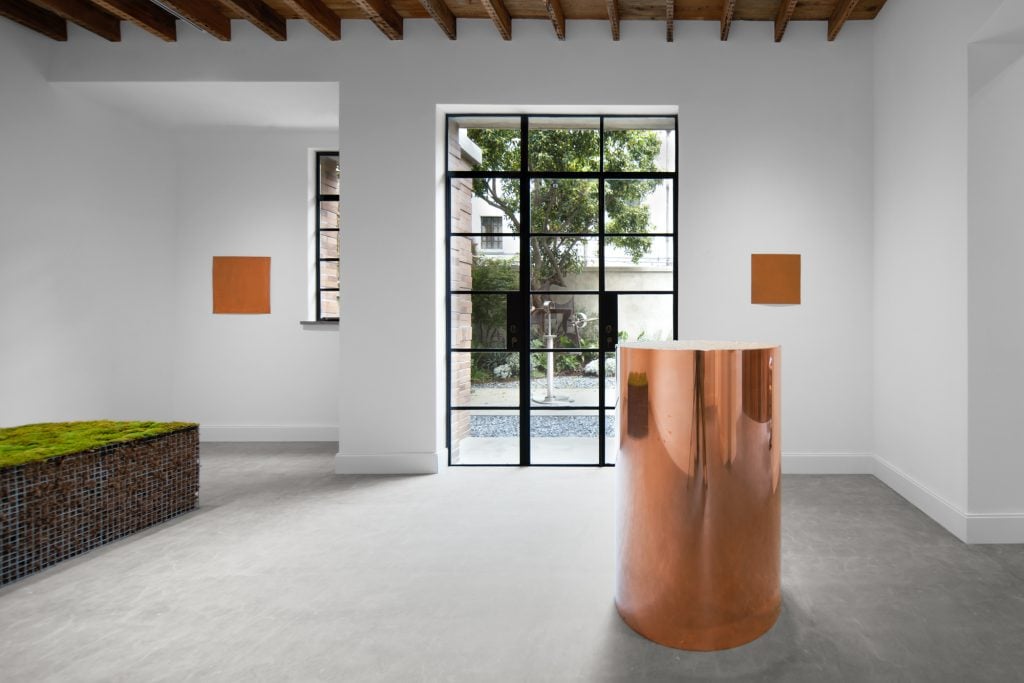
Installation view of Paula Cooper Gallery’s Shanghai pop-up exhibition, “Resonance.”
It’s an undeniably elegant minimalist presentation. Gallery director Cara Zhuang, the main driver behind the project, noted that the impact of this project on local industry was greater than expected. The total value of the exhibited works is $7.5 million, with a Carl Andre installation priced at $1.2 million. Although the gallery did not disclose further sales details, they mentioned that “generous support from Chinese private museums” enabled the project to move forward amid an uncertain economic climate.
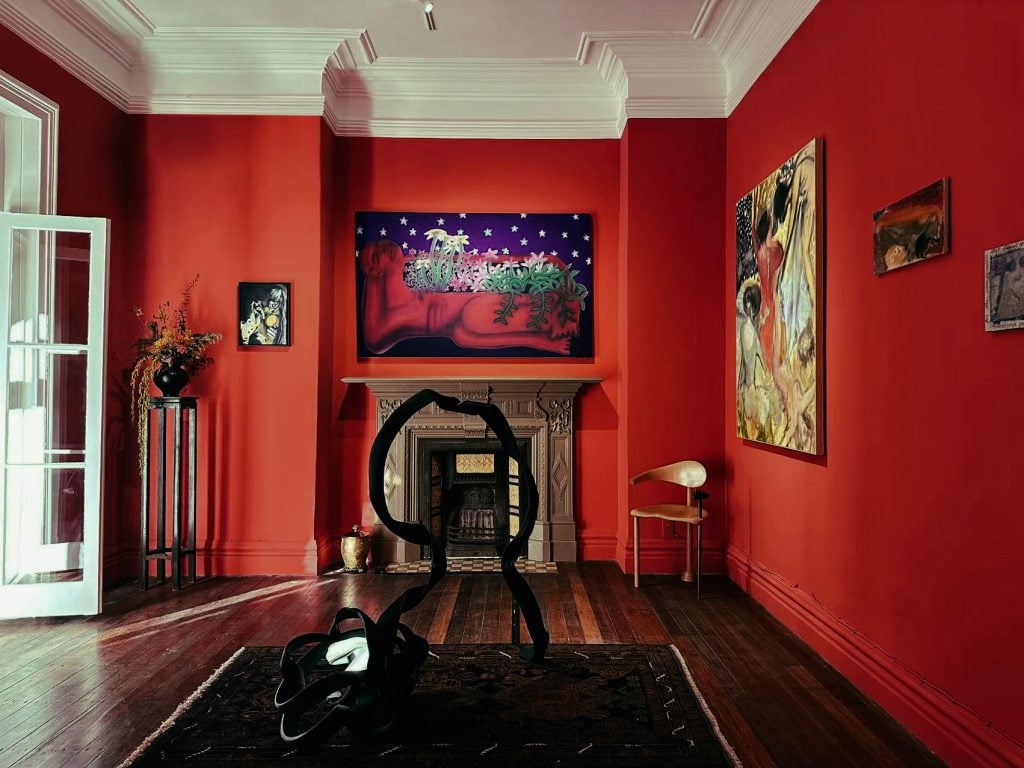
Luning Wang’s new art space Rong Lu.
Not far from Paula Cooper’s pop-up is a space launched by Luning Wang, a London-based art writer who just returned to Shanghai this year. Named Rong Lu, a homophone for the Chinese word meaning “melting pot,” the space emphasizes collaboration with international gallerists and projects. The group exhibition features popular Western artists like Miriam Cahn alongside overseas Chinese artist Peng Ke. Interestingly, the building’s original owner was the brother of the original owner of Prada Rong Zhai, a cultural space in the heart of the city.
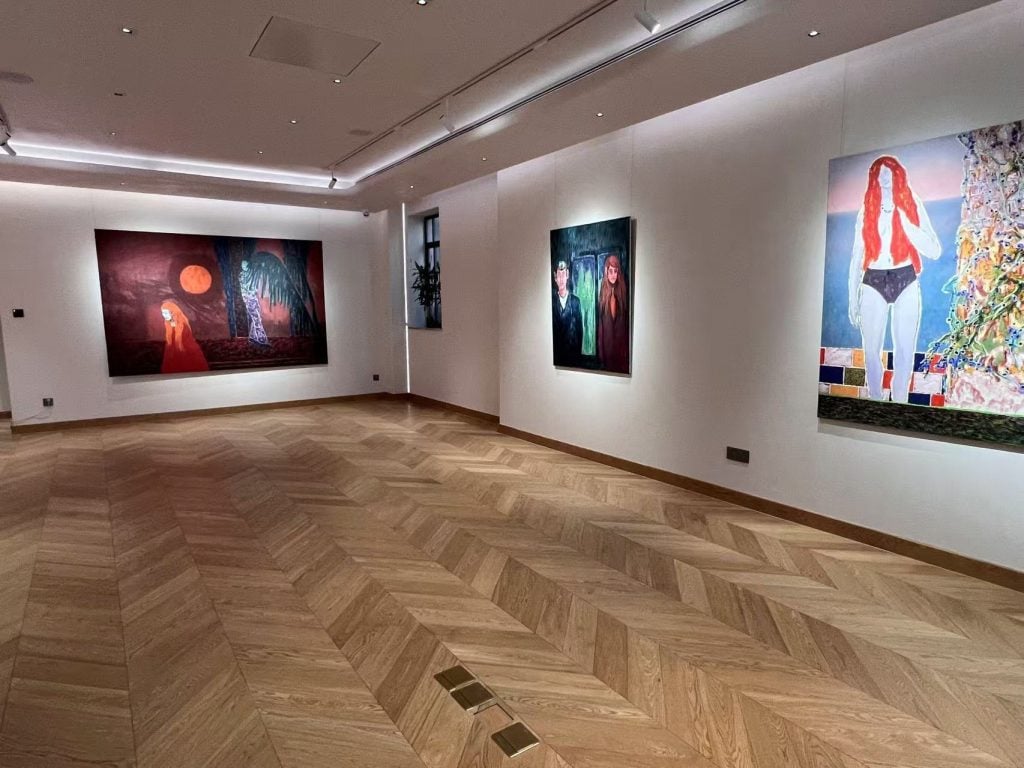
Omar El Lahib’s project opened in 1690 together with Saatchi Yates. Photo: Cathy Fan
At the opening, I encountered collector Zhou Chong, who presented a project by Lebanese artist Omar El Lahib at his yangfang mansion 1690 (named after the address) with gallery Saatchi Yates this year.
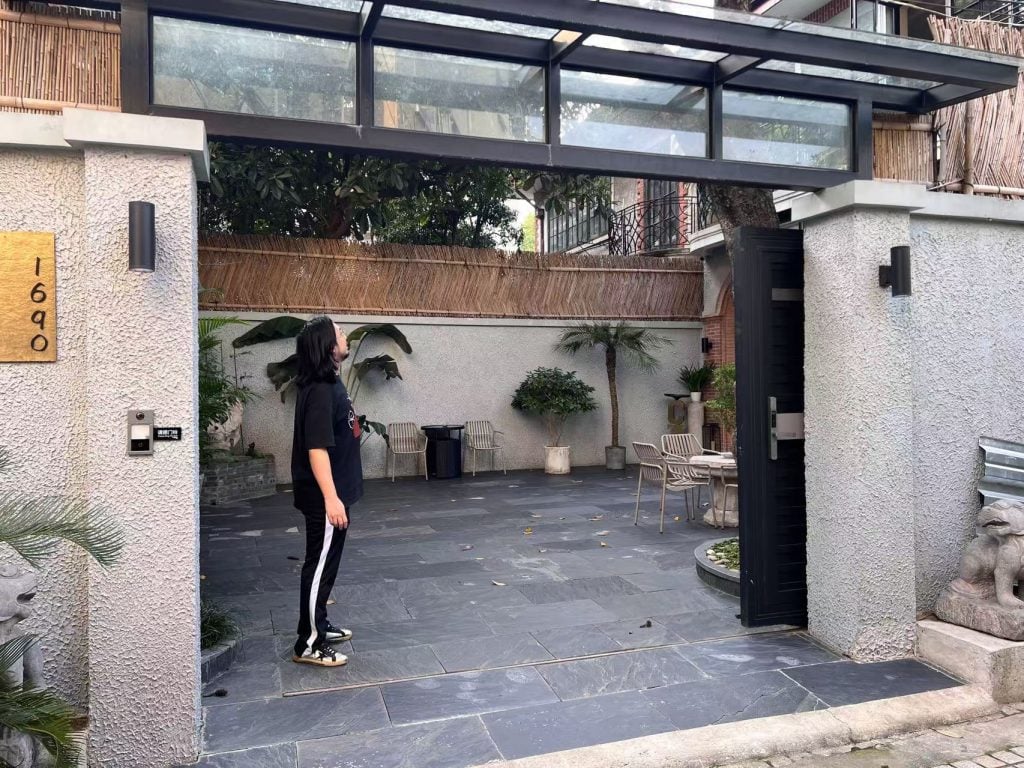
Zhou Chong standing in the front yard of his art space 1690. Photo: Cathy Fan
Wang mentioned that yangfang owners are highly flexible with activities in their spaces, and many galleries or brands in Shanghai’s bustling Bund area started from small spaces in the former French Concession: “Shanghai excels at integrating art into everyday life, with a strong openness to cross-disciplinary collaborations.” She anticipates more similar projects in the future, with yangfangs potentially becoming testing grounds for overseas galleries in the Chinese market.
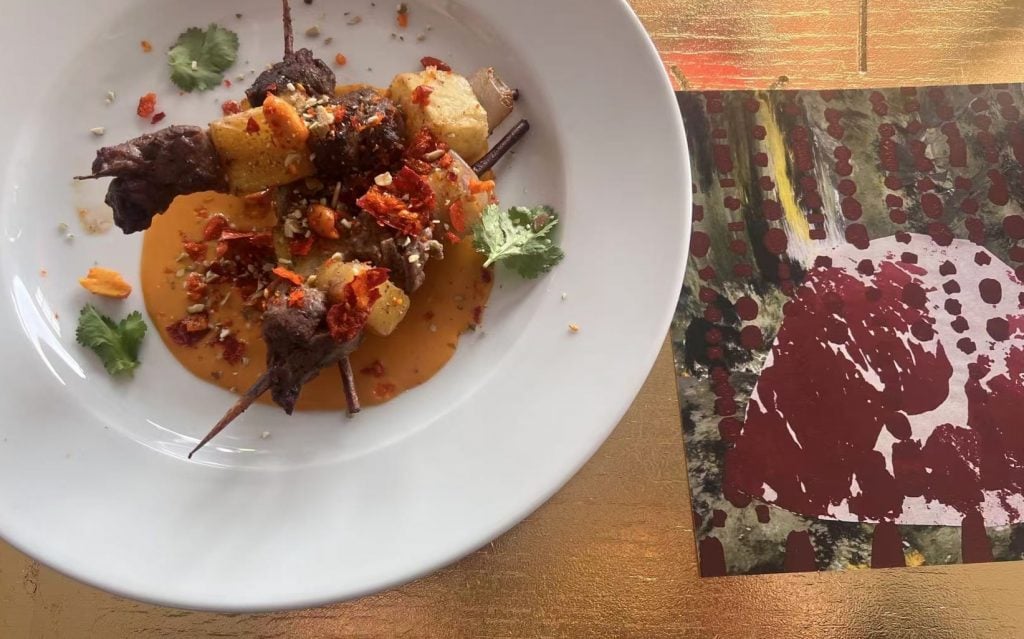
Main course conceptualized by artist Hou Zichao’s artwork Flesh Album at the Art Resort lunch.
Numerous new projects demonstrate the close intertwining of art, fashion, and lifestyle in Shanghai. Former Hauser & Wirth senior director Vanessa Guo, now co-founder of Paris’s Galerie Marguo, is presenting a solo show of American artist Claudia Keep at the boutique Le Monde de SHC in Shanghai. The artist also released two limited-edition scarves in collaboration with the store. Yiren Shen, a former writer at Artnet News China, presented Wu Yijia’s utensil-related art in a private home, which sparked significant interest.
I also attended a riverside lunch hosted by The Art Resort, featuring a main course conceptualized by Beijing-based artist Hou Zichao. Co-founded by Larry’s List and The Table Studio, the event aims to “blend art, design, lifestyle, music, performance, fine dining, and wellness into a unique experience.”
DOMESTIC DOMINANCE
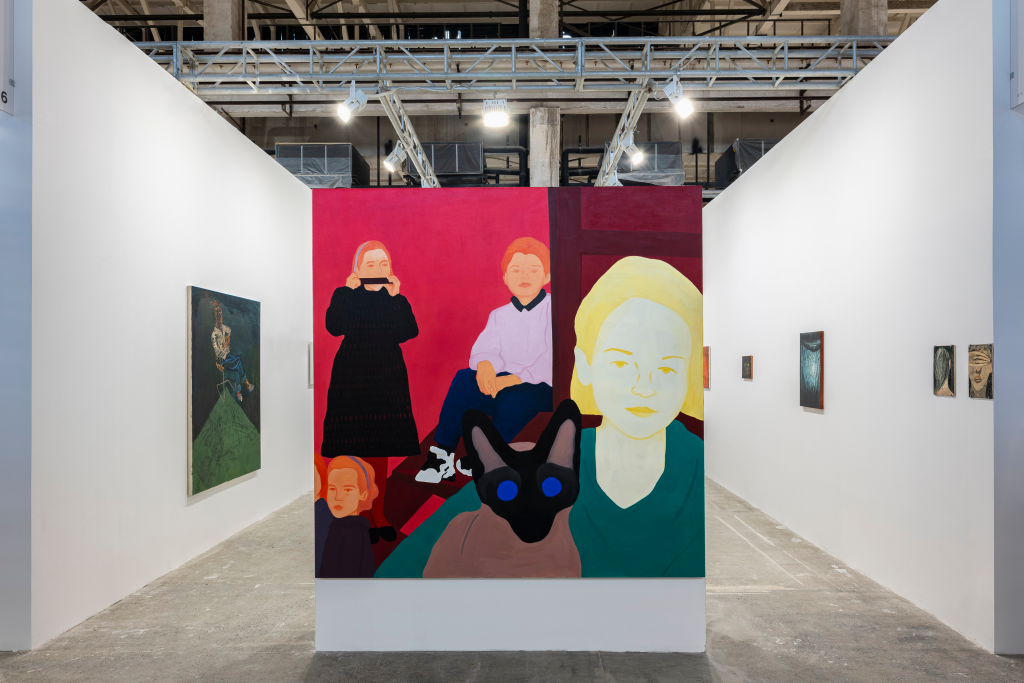
Booth of Yve Yang Gallery at this year’s West Bund Art & Design
What surprised me most was that this year, some 21 galleries—mostly Chinese, including several emerging outfits—participated in both art fairs. There was also a noticeable return of overseas Chinese gallery owners to the Shanghai art market post-lockdown. They are often millennials or even younger, focusing not only on the Asian diaspora but also introducing overseas artists into the Chinese mainland market—a fusion that easily finds a home in Shanghai.
YveYang Gallery in New York’s Soho, a regular at West Bund for several years, saw gallery owner Yang frequently traveling between Europe, the U.S., and Asia, bringing with her an impressively international lineup. Most of her works, priced between $20,000 and $30,000, sold out on VIP day, including works by Raphael Egil and Düsseldorf-based Chinese artist Li Tangting.
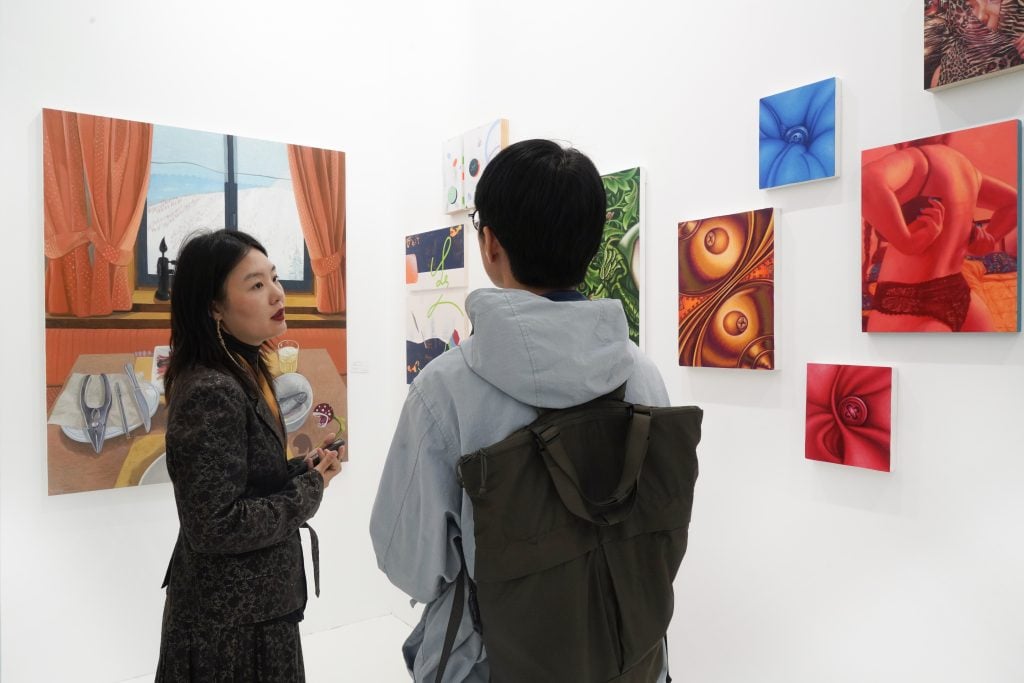
Zhou Shihui, founder of New York’s Latitude Gallery working on the joint booth with Bonian Space
Latitude Gallery from New York’s Chinatown and Bonian Space (located in Beijing and Shanghai) collaborated on a salon-style hanging at ART021. Bonian’s founder Jin Youmin told me that the two galleries share a “mysterious chemistry” in their artist choices, with Jin himself being an early collector of Latitude. This partnership also reflects their mutual desire to “focus more on and deeply explore young overseas Chinese artists.”
The Los Angeles-based Make Room also returned to ART021 this year, featuring a popular glass-painted installation by artist Peng Ke, which was sold on VIP day for ¥93,000 (around $12,800).
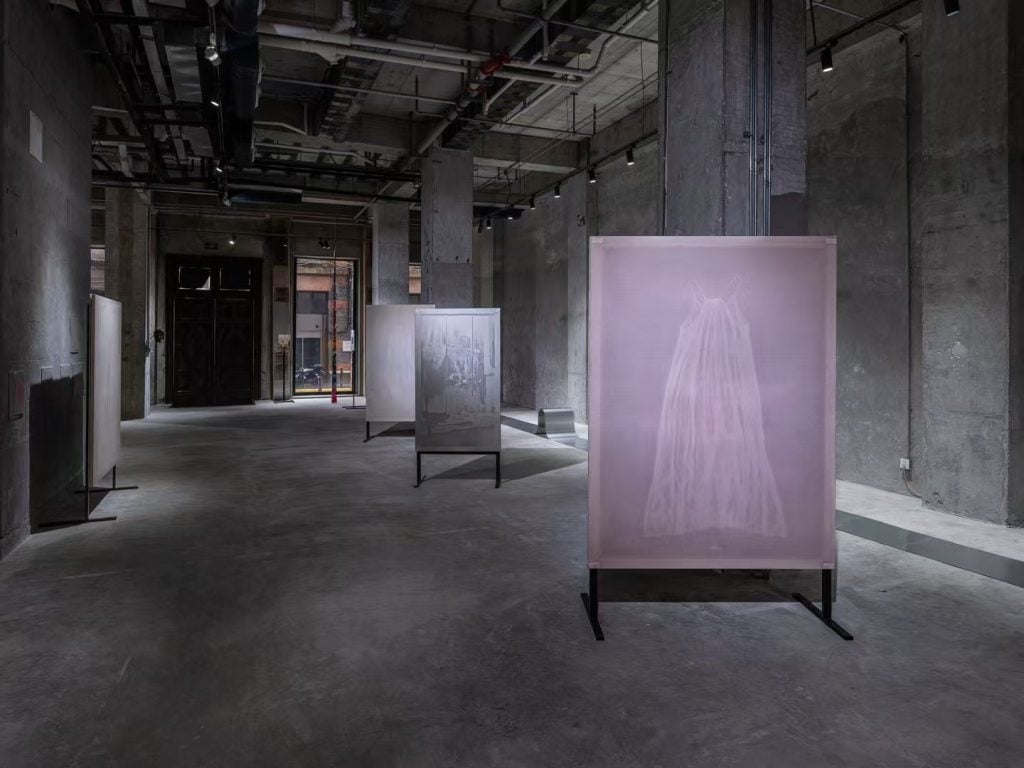
A pleasant surprise was seeing StillShow in a prime location on the Bund, next to Perrotin and the Rockbund Art Museum. Founded by four New York-based Chinese Gen Zers, StillShow is dedicated to a “nomadic exhibition space that defies traditional art fair and gallery formats.” Following their debut pop-up at the Armory Show in New York, they brought 13 emerging artists to Shanghai, many exhibiting in China for the first time. In the works of artists Xingzi Gu and Ren Light Pan, I caught a hint of subtle queer expression. The young founders told me they had already gained substantial experience navigating Chinese censorship.
SLOW SALES BUT BIG SHOWS
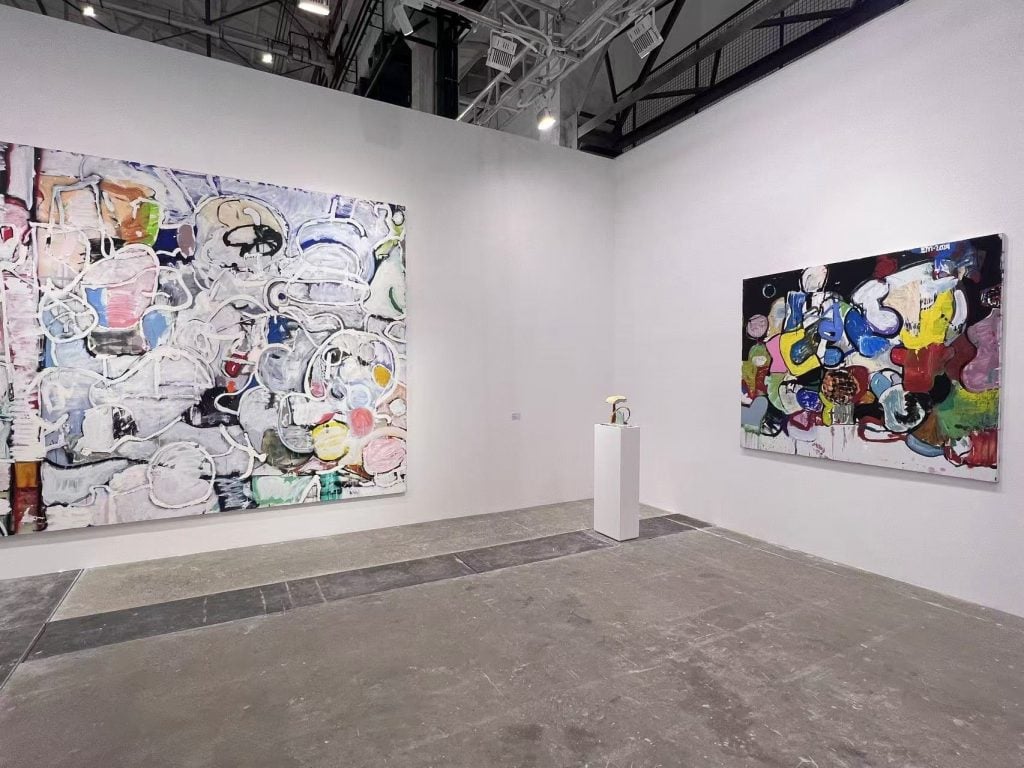
Booth of Timothy Taylor at West Bund Art & Design
In differentiating itself from ART021, West Bund displays a preference for Western galleries, particularly blue-chip ones, although of the “big four” only David Zwirner participated this year. Ota Fine Arts’ booth embodied the fair’s traits this year: A return of a few million-dollar works, a noticeable gap in mid-tier pricing with most works priced under $50,000, and minimalist installations centered around paintings. It’s a noticeable shift: Before the lockdown, West Bund had a reputation for “statement” solo shows, but that scene seems to have faded.
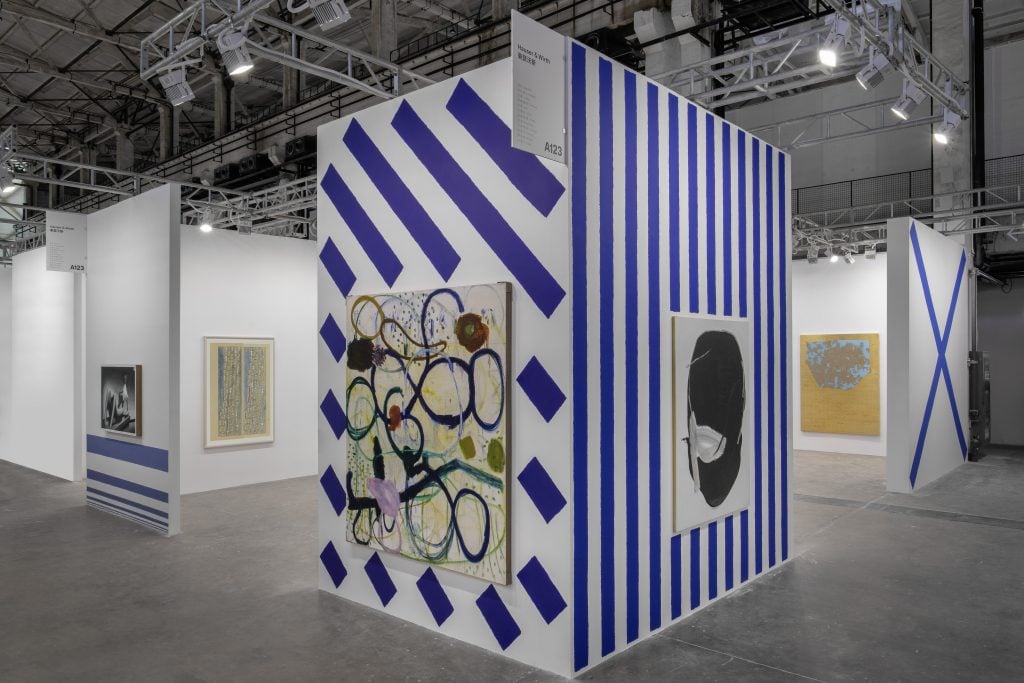
Installation view, Hauser & Wirth at West Bund Art & Design 2024. Courtesy the artists/estates and Hauser & Wirth. Photo: JJYPHOTO
Compared to last year, million-dollar artworks showed less disappointing results. Hauser and Wirth sold a Philip Guston piece for exactly $1 million to a private Asian collection. White Cube also sold a Lee Ufan piece for $1 million, along with a $250,000 cast iron sculpture by Antony Gormley.
Several gallery staff noted that while there was substantial inquiry on the first day, collectors took notably longer to decide. The ratio of inquiries to completed transactions was low.
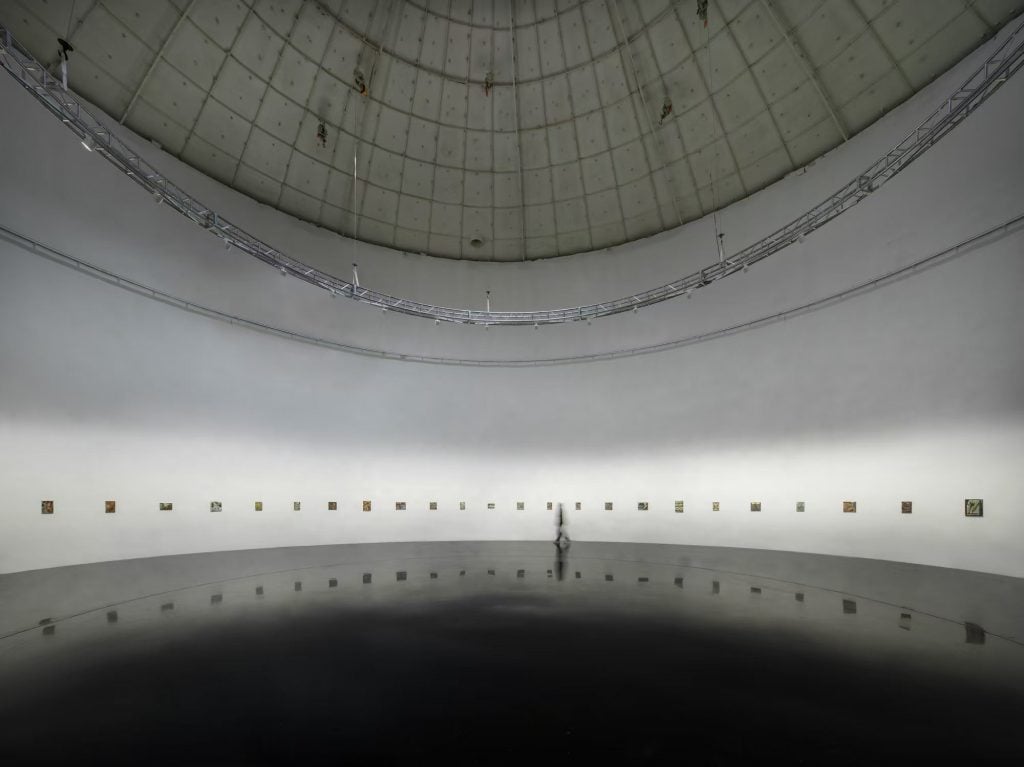
Issy Wood’s exhibition “What I Eat In A Day” at Tank Shanghai.
However, this did not seem to surprise many, given their conservative expectations. Dealer Timothy Taylor returned to China, noting that “sales are up on last year already but this comes with the benefit of a familiar audience.” His booth received numerous inquiries for works by Eddie Martinez and Daniel Crews Chubb, both benefiting from previous or ongoing museum exhibitions in China, with one of Martinez’s works sold for $275,000.
It’s worth noting that Chinese private museums have become key spaces for blue-chips, particularly those without a permanent presence in China. Across from the A pavilion of West Bund, Tank Shanghai recently opened an Issy Wood solo show, while the He Art Museum in Guangdong Province launched a large-scale Bosco Sodi exhibition on November 10. Timothy Taylor also revealed plans for two ambitious museum projects over the next two years.
FOUNDATIONS > PRIVATE MUSEUMS
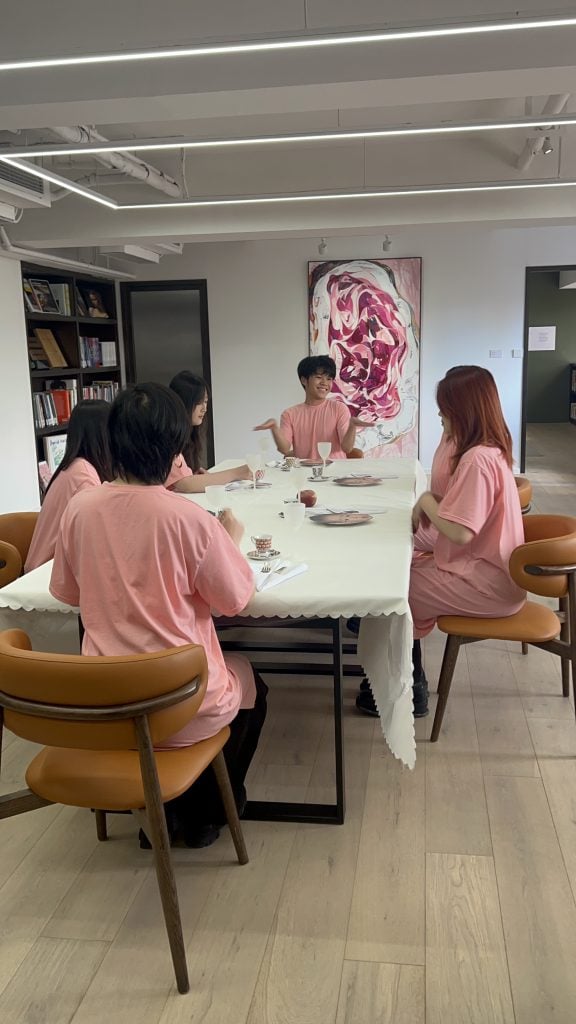
Artist Zhao Yu’s performance work Cheer For You at the opening of the group exhibition “Words for the Future” at the ASE Foundation.
The museum boom in China appeared to arise in an instant, and after a few years, it has abruptly halted. Now, terms like “collection” or “foundation” are more frequently heard. Amid China’s uncertain economic prospects, institutions backed by real-estate ventures have gone largely silent, with private museums in China seen as high-cost investments with uncertain returns with no clear self-sustaining mechanism. Foundations, often registered outside of mainland China, offer a more flexible and diverse option. Many collectors leverage spaces they already own or can access at reduced rates to support exhibitions and academic projects.
After 20 years of collecting, collector Joan Zhang established the ASE Foundation. In addition to curatorial projects, the foundation is dedicated to academic research and support for art sponsorships and an art library. During Shanghai Art Week, curator Shen Qilan organized a group exhibition of women artists from Zhang’s collection.
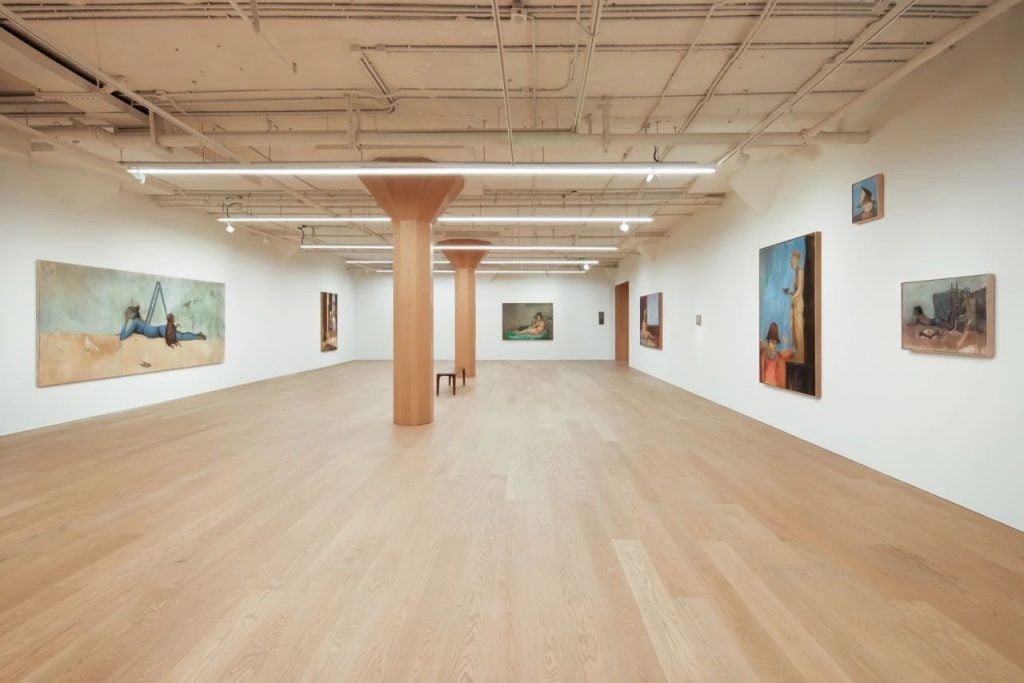
Sarah Buckne’s solo exhibition “Inferno Rosa” at Longlati Foundation.
The Longlati Foundation, which rose to prominence through its acquisitions of young painters, was co-founded in 2019 by venture capitalist David Su and artist Chen Zihao. Last year, they moved into the newly developed art space hub Suhe Haus, where they hosted a dual painting exhibition for German artist Sarah Buckner and Paris-based Finnish artist Henni Alftan.
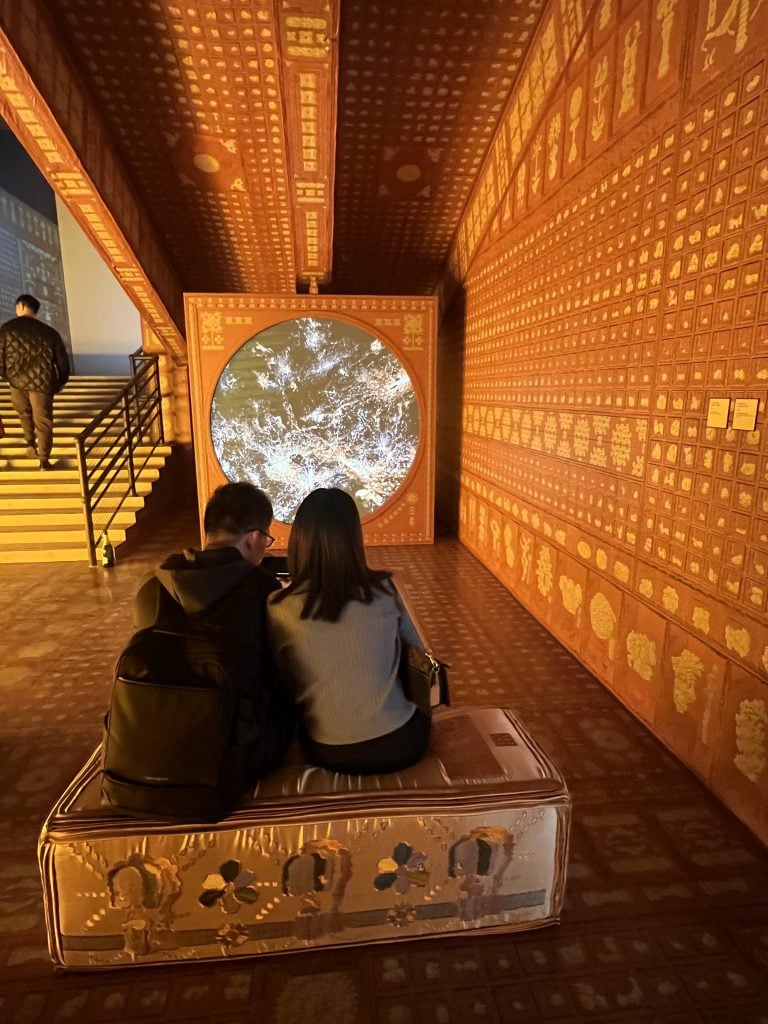
Commissioned by CHERUBY, artist Duyi Han presented an immersive installation on the first floor of Suhe Haus. Photo: Cathy Fan.
In the same building, art patron Cherry Xu commissioned peer artist and designer Duyi Han to wallpaper the lobby stairwell with a protein-based 3D structure, reimagining a secret Chinese garden for her soon-to-be-launched non-profit art institution, Cheruby, under the theme “Visions of Bloom.”
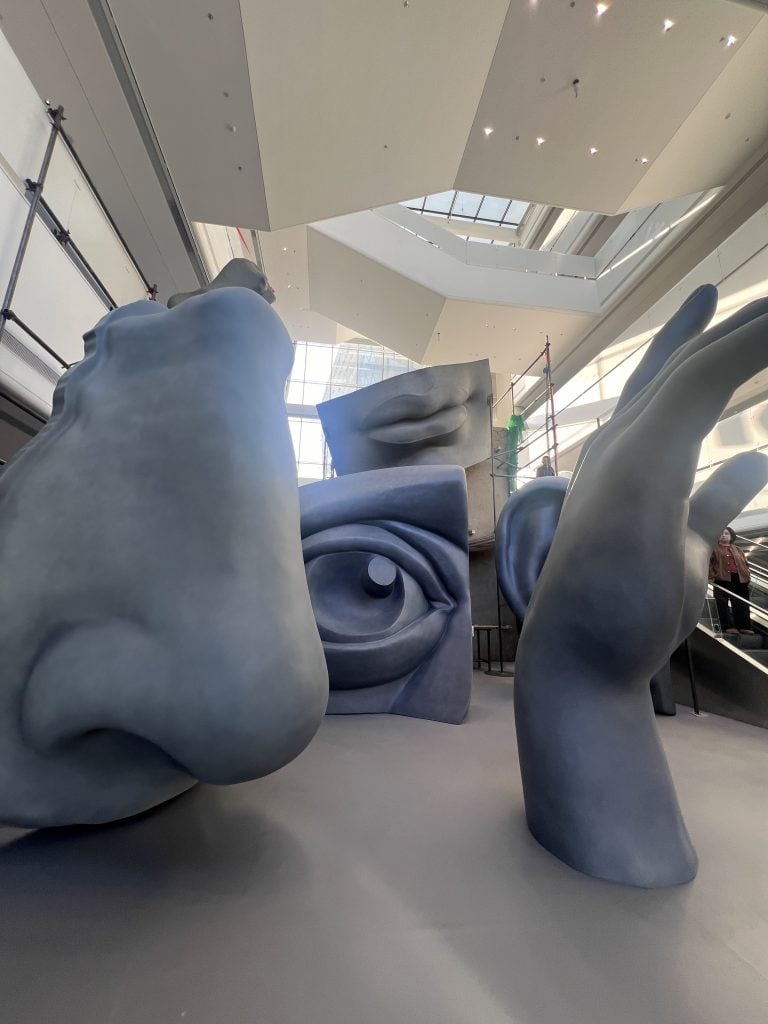
Artist Liu Wei’s gigantic installation, presented by Cc Foundation at Immersive Art Gallery in Shanghai. Photo: Cathy Fan
Beijing-based artist Liu Wei presented a colossal two-story-high installation resembling a sliced David sculpture, which wowed visitors on the ground floor of the Immersive Art Gallery (IAG). ART021 founder David Chau’s non-profit Cc Foundation also continued to showcase its collection and support new artist projects.